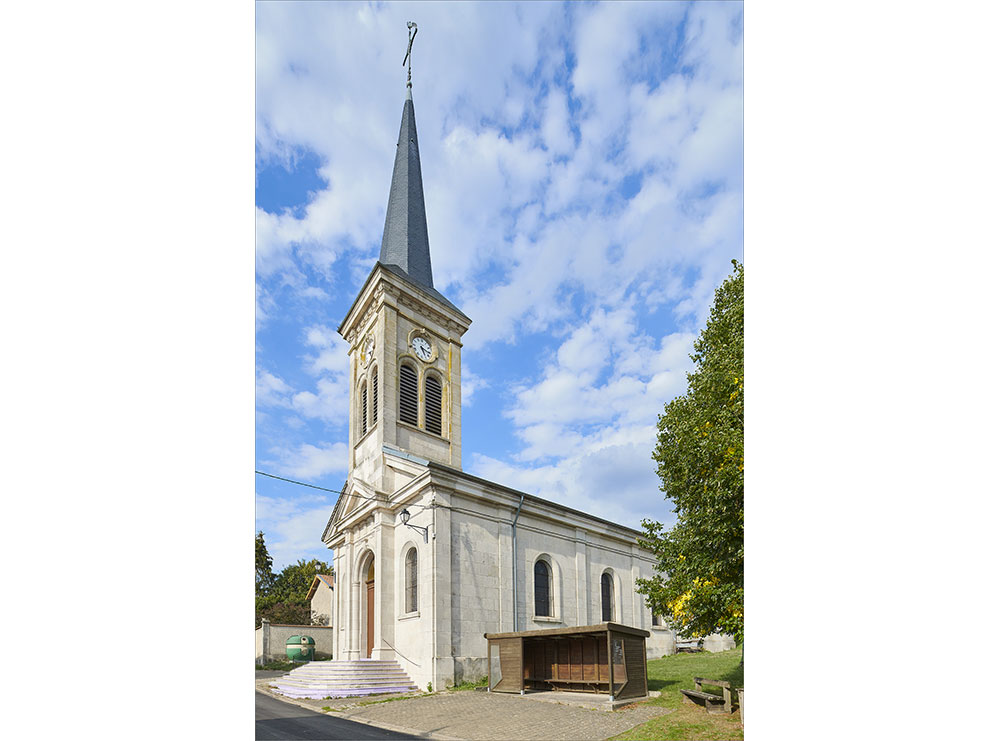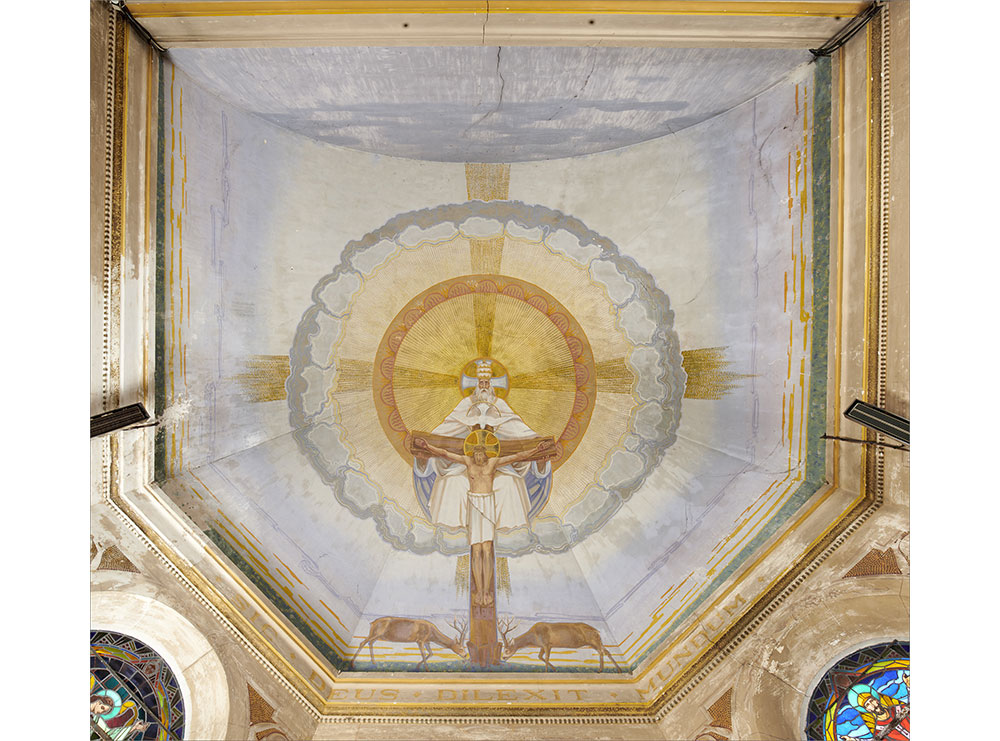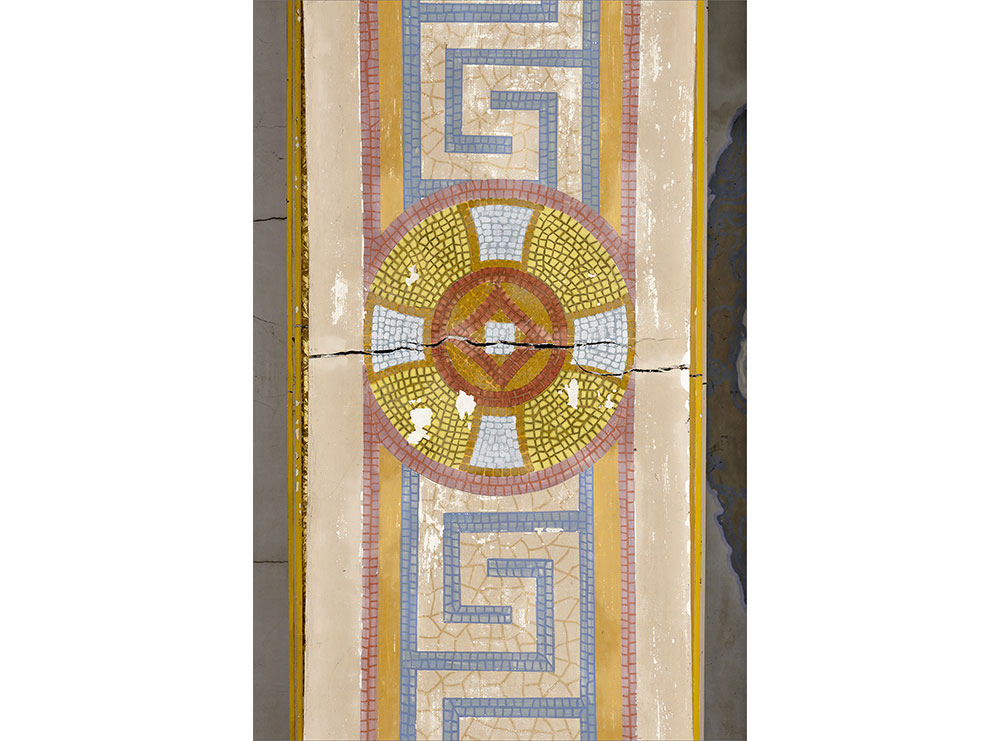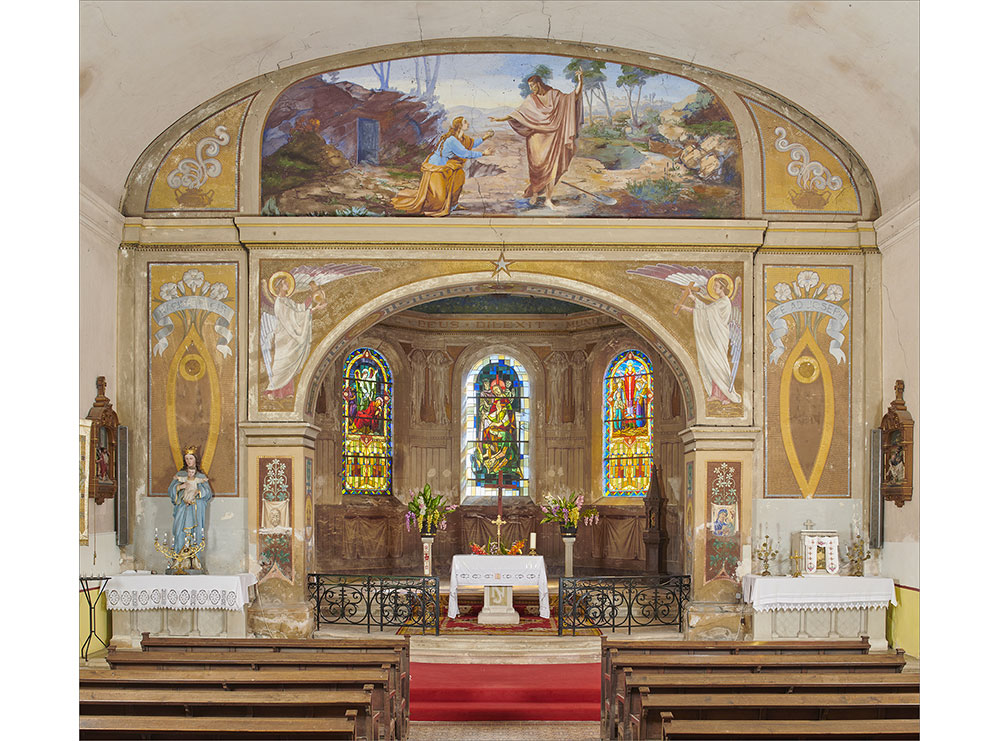Lamorville, Church of St Mary Magdalene
In 1933, the parish of Lamorville reached an agreement worth 20,000 francs with Duilio Donzelli for the decoration of the church of St Mary Magdalene, which was destroyed during the First World War and rebuilt in 1922 on the site of the previous building. The detailed estimate lists the various forms of planned decoration that can now be admired in the church.
The whole of the choir is painted. A Throne of Grace is depicted on the vault over the apse. This iconographic motif may also be seen in the church of Cierges-sous-Montfaucon. At the foot of the cross are two drinking stags, symbols of eternity, which are reminiscent of the depictions of this animal drinking from the rivers of Heaven on Italian mosaics (cf. St John Lateran, St Clement, etc.). The middle register is made up of architectural caryatids in grisaille in the Art Deco style which surround the three bays of the apse. At the sides, four kneeling angels hold up a Sacred Heart in a halo on one side, and the elements of the Eucharist (bread and wine), which are likewise haloed, on the other side. The lower register is taken up by drapery.
The decoration on the triumphal arch is likewise very rich. The central panel is dedicated to the church’s patron saint, Mary Magdalene, who is shown here opposite Christ in the Noli me tangere scene. This depiction is entirely in keeping with the classic Western iconographic tradition, and is reminiscent in particular of the painting of Eustache Le Sueur (17th century, Museum of Fine Arts in Grenoble, on deposit from the Louvre) in the attitudes of the two figures, their clothes and their gestures, and the setting in a landscape. The pillars and the intrados of the arch are decorated with instruments of the Passion (ladder, nails, lance, hammer, pincers) and palm branches.
Finally, the small chapel dedicated to the war dead located at the back, on the right, was decorated by Donzelli. Unfortunately, it has deteriorated a great deal: entire sections of the ceiling have come off and the decoration has almost entirely disappeared, it is no longer visible apart from the intrados, at the entrance.
Intrados: inner and concave surface of a vault, arch or curve.
Noli me tangere: Latin expression meaning “do not touch me”, words which Christ is thought to have spoken to Mary Magdalene when he appeared to her following his resurrection.
Throne of Grace: a special depiction of the Holy Trinity in which the Father holds his Son’s cross while the dove of the Holy Spirit hangs in the air between the two figures.





